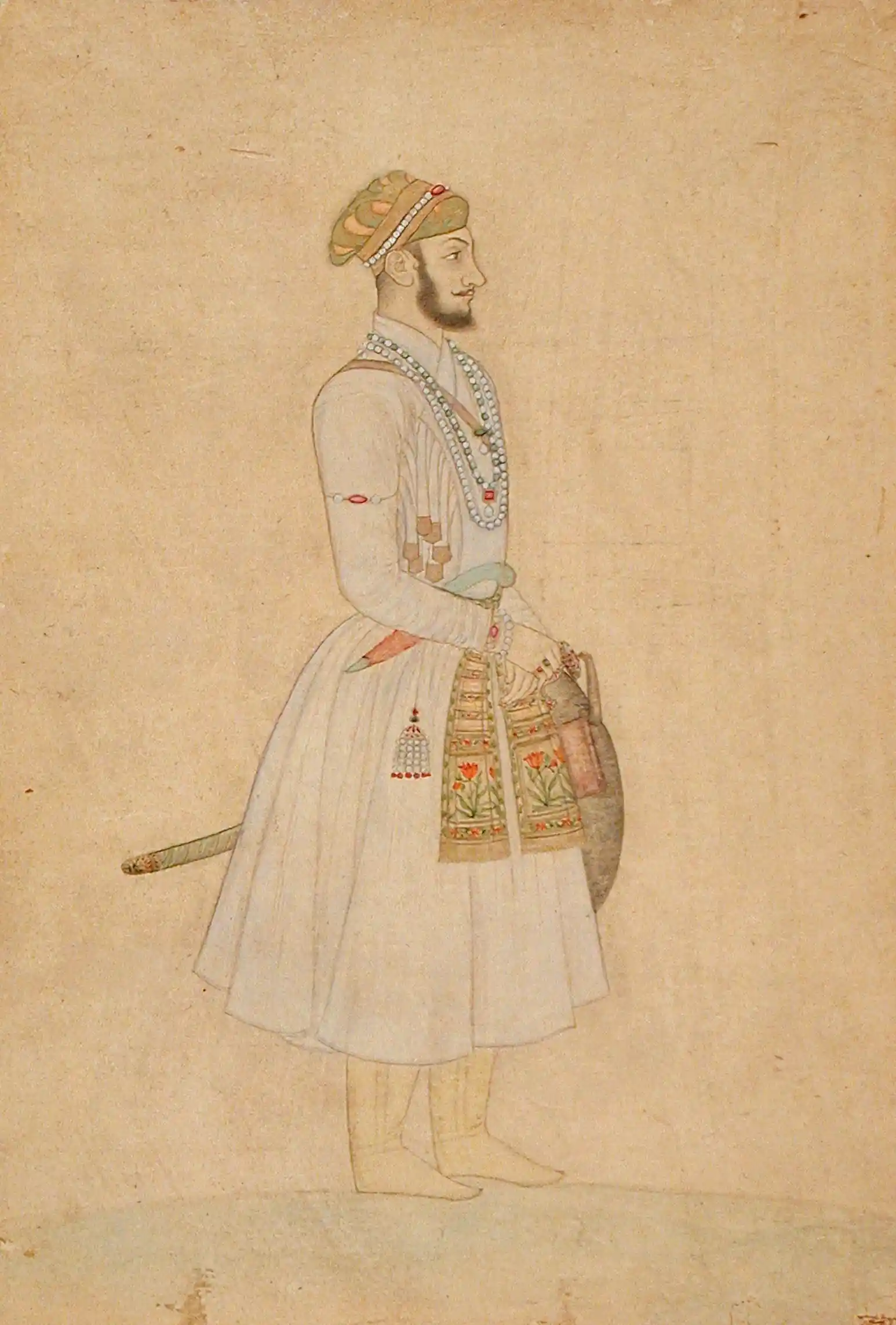The Fall of Mughal Baton
The war of succession in the Medieval Mughal Empire is no secret. The royal life thus sustained on planning, plotting, conspiring and finally overthrowing one's strongest contender. The lust for the throne always started with masked fidelities and ended with bloody battles.

Bahadur Shah in his youth; Image Source- Wikipedia
History records no other powerful Mughal ruler after Aurangzeb. His successors initiated the ultimate decline of the grand Mughal Empire. The later Mughal emperors could not withstand the ravages of time and became mere pawns in the political game of new emerging powers in the Indian subcontinent.
Born as Mu'azzam, Bahadur Shah was the third son of Aurangzeb and the eighth Mughal ruler of India. While being a prince came with advantages, it also posed some threatening challenges. Shah, like his father, was an ambitious child. Since the age of 20, he concocted many plans to dethrone his father. Given the socio-political understanding of the medieval era, conflict over succession was inevitable.
In the long list of plots against his father, Shah's very first attempt to provoke a conspiracy was during the raid of the Deccan capital of Mughal Empire, Aurangabad, by Shivaji. Shah did not even move a finger to stop Shivaji. While Aurangzeb ignored this as indifference, later events would only make Shah's rebellion stronger.
Soon after becoming in charge of Deccan, Shah executed an insurgency in 1670. Aurangzeb was successful in dissuading his son, only for the latter to rebel again in 1680. This time, Aurangzeb took stricter measures and put Shah on close vigilance from 1681 to 1687. The father-son duo was now at crossroads balancing the see-saw of power and throne.
The last straw of Aurangzeb's patience broke when his spies confirmed the exchange of treasonous messages between the ruler of Golconda and Bahadur Shah. Aurangzeb then decided to isolate Shah and punished him severely by starving him. A father's heart could not remain stone forever. Aurangzeb later rehabilitated Shah in north Delhi under his watchful eyes and spies. Shah slowly gained his father's trust and became the governor of Akbarabad or present-day Agra.
The history repeated itself when Aurangzeb's death in 1707 waged a full-fledged war amongst his sons. Bahadur Shah emerged victorious by killing his brother Azam Shah at the Battle of Jajau in June 1707. Like his father, his ambition drove him to claim the throne at all costs.
As the cliche goes, sitting on a throne is a thousand times harder than earning it. Shah's rule was challenged by the united rebellion of the Rajputs of Amber, Jodhpur and Udaipur. Even though Shah was able to redeem the situation at the moment, the future of Mughal rule was visibly collapsing.
The battle was far from over. Shah's second brother, Kam Bakhsh, established himself as the ruler of Bijapur and declared it an independent sovereign. An enraged Shah marched towards the South with his huge army. He successfully killed Kam Kakhsh and his son in 1709.
This was followed by an insurgence in Punjab under the leadership of Banda Bahadur. Shah had to rush back to the North to suppress the rebellion.
Bahadur Shah's short reign was mainly spent in trying to gain control over the vast Indian subcontinent. Ruled by the lust for the throne and devastated by the bloodthirsty fate of fratricide, Shah not only lost his brothers but, also could not enjoy his time on the throne.


